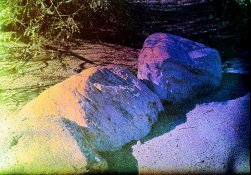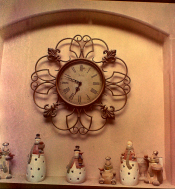Hello Folks,
A bit of a left field post. A lot of us look to experiment and save money by buying film in bulk. I recently bought a 250ft roll of 70mm VNF (video news film) transparency and I am slitting it down to 120 and retaping on reused backing paper. I processed a roll in Rodinal 1:100 for 90mins semi-stand for FD, then a vinegar/water stop bath & a rinse then gave the reel a couple of strobe pops in lieu of a chemical reversal. The I used home brewed ECN-II chems for the color leg of the journey.
My initial results were a bit of a color spectral shift I'm attributing to uneven light distribution when I popped the flash into the tank with the rolled up film. The issue I'm having is that unrolling the film and giving it even exposure seems to be too much as I get very dense dark blue slides that are damn near bullet-proof.
Is there a "magic bean" of the right intensity & duration of exposure that I'm missing for the "poor mans" reversal?

Flip the reel over for another pop? I'm seeing times from 20 seconds to 3 minutes in various posts.
For anyone that curious I paid $50 for the 250ft roll. Thats 93 rolls or .53 cents a roll for 120 transparency (not too shabby if I can get results)
A bit of a left field post. A lot of us look to experiment and save money by buying film in bulk. I recently bought a 250ft roll of 70mm VNF (video news film) transparency and I am slitting it down to 120 and retaping on reused backing paper. I processed a roll in Rodinal 1:100 for 90mins semi-stand for FD, then a vinegar/water stop bath & a rinse then gave the reel a couple of strobe pops in lieu of a chemical reversal. The I used home brewed ECN-II chems for the color leg of the journey.
My initial results were a bit of a color spectral shift I'm attributing to uneven light distribution when I popped the flash into the tank with the rolled up film. The issue I'm having is that unrolling the film and giving it even exposure seems to be too much as I get very dense dark blue slides that are damn near bullet-proof.
Is there a "magic bean" of the right intensity & duration of exposure that I'm missing for the "poor mans" reversal?
Flip the reel over for another pop? I'm seeing times from 20 seconds to 3 minutes in various posts.
For anyone that curious I paid $50 for the 250ft roll. Thats 93 rolls or .53 cents a roll for 120 transparency (not too shabby if I can get results)
Attachments
Last edited by a moderator:

















